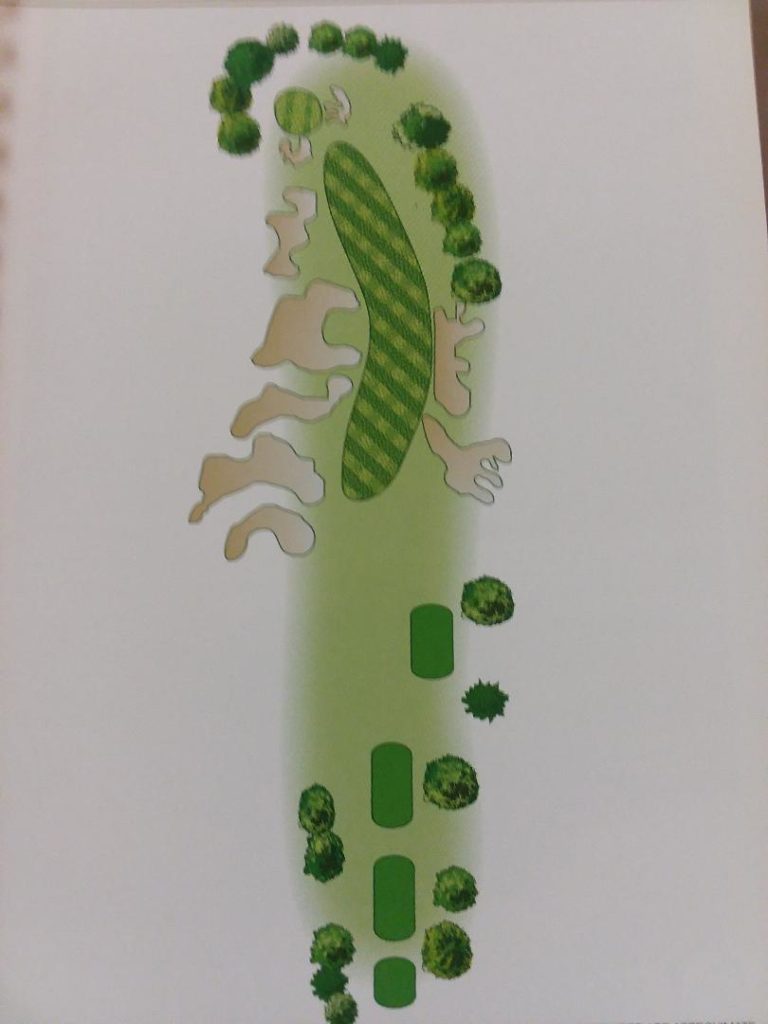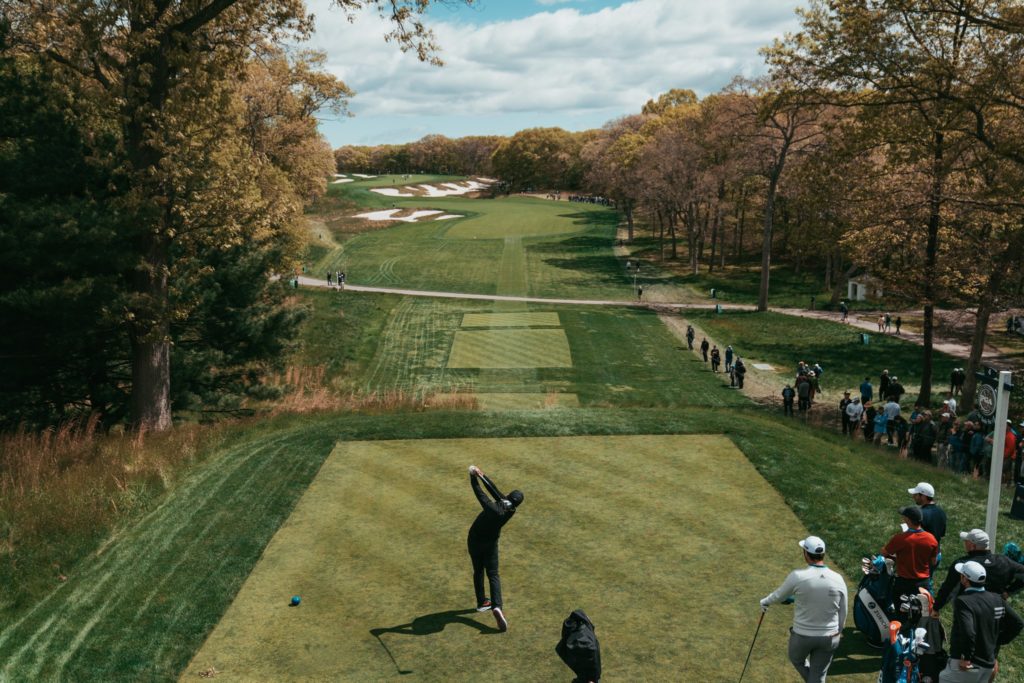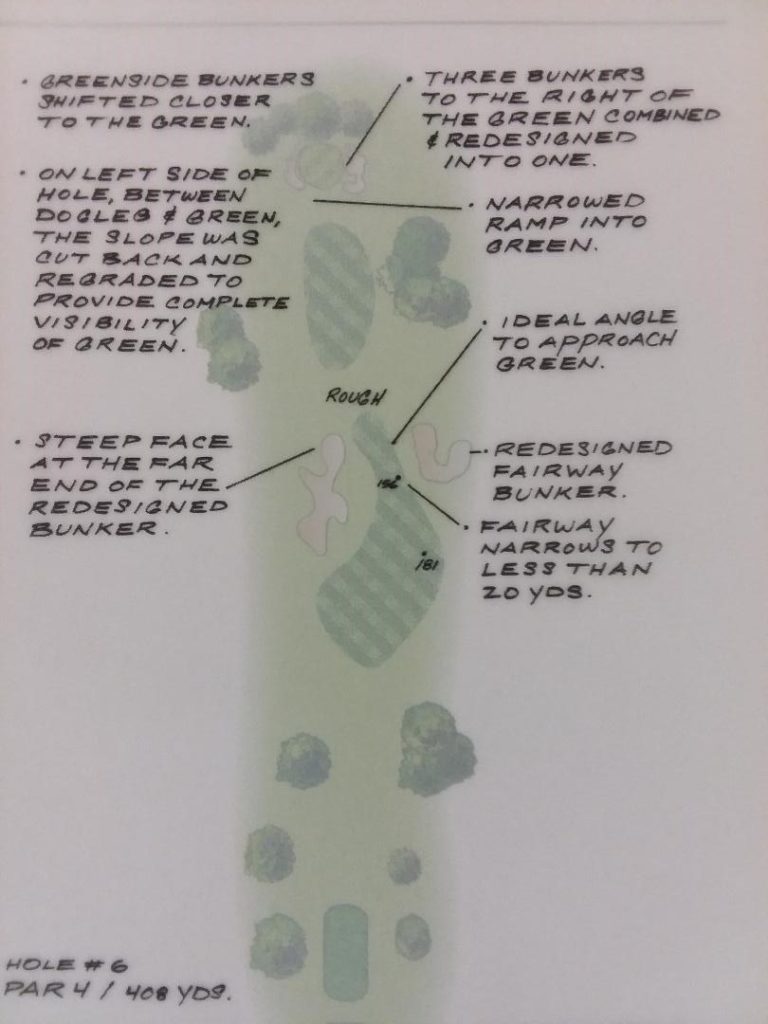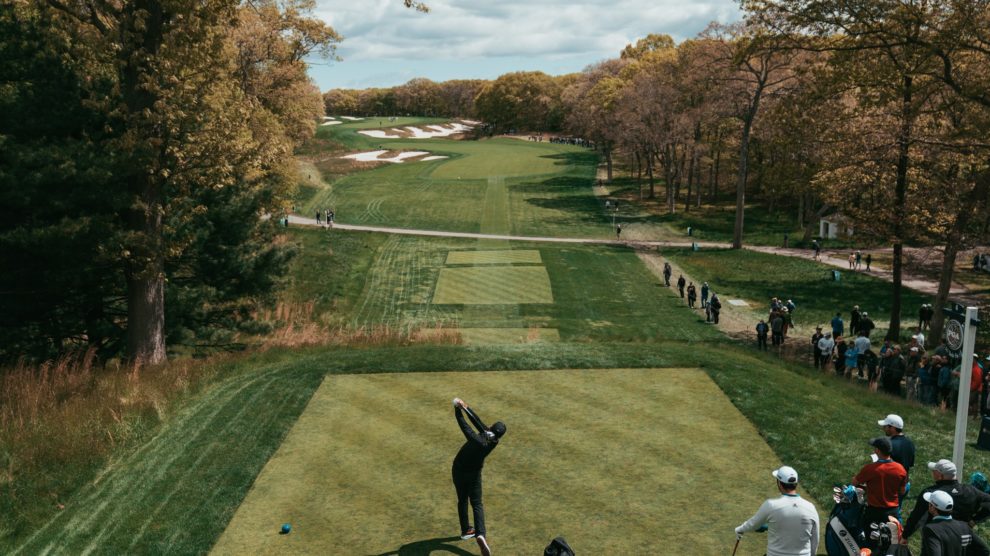FARMINGDALE, N.Y. – Much has been made of Bethpage’s brute length, elevated greens and deep, dangerous, whimsically shaped Rees Jones inkblot bunkering. Most players are convinced this PGA Championship will feel much like a U.S. Open in terms of difficulty, partly because the Black Course hosted the 2002 and 2009 U.S. Opens before becoming a PGA of America venue for this event and the 2024 Ryder Cup.
But there are more than a few swing holes – holes that play a half-par easier or harder than their par. Birdie opportunities do exist, despite defending champion Brooks Koepka’s assertion yesterday that he thinks the only two birdie holes are the two par 5s and that, the rest of the way, you hold on for dear life. Let’s take a closer look at some of the more interesting, perhaps even underrated holes at Bethpage Black, at times through the eyes of its renovator Rees Jones, at times through the eyes of some of the locals who call Bethpage their home course.
2nd hole: par 4, 389 yards
- 2002 stroke avg. = 4.204
- 2009 stroke avg. = 4.065
- Rank: 4th easiest hole on the course
One of the only holes that plays the same length as it did in 2002 and 2009, this hole is reminiscent of some of the short par 4s at Merion Golf club as it doglegs in an awkward place. Bending sharply left and ascending steeply uphill between two tree-lined ridges, it’s one of the few places where length is not an advantage as if you miss the fairway, you are hacking out of 4-inch rough from an odd distance and well below the hole. For the professionals, a long iron will place them in optimum position for a full wedge into the green.
“It’s the shortest par 4 on the course, and the only one measuring under 400 yards, but it will bite you if you hit a poor tee shot or miss the green to the left,” explains Charles “Chuck” Cordova, a Forest Hills denizen who has played the Black at least once nearly every weekend for the last 27 years.

The hole is an excellent example of how Tillinghast looked for natural green sites on top of hills, since earthmoving equipment was used so much more sparingly in the construction of the Black, so he sought out natural amphitheaters.
“The topography of Bethpage lends itself perfectly to this purpose,” added Rees Jones, who did extensive work renovating the course over the last 20 years. “Five and 15 are two terrific examples of this as well.”
The natural amphitheater is also a terrific spot to bunker down and watch golf as the entire third hole, a long and difficult par-3, is also visible, and at a full 240 yards, it should see many bogeys.

4th hole: par 5, 517 yards
- 2002 stroke avg. = 5.011
- 2009 stroke avg. = 4.740
- Rank = 2nd easiest hole on the course
The iconic par-4 fifth hole steals most of the ink and airtime, but this short, but fascinating par 5 is even more of a showstopper. Rising sharply uphill, the golfer must carry a Tillinghast staple – the “Great Hazard” – a mammoth cross-bunker that divides the hole in two. One of only two par 5s on the course, long hitters might club down to 3-wood so as to not drive through the fairway into the rough. With plenty of room to bail out right on the second shot, there’s no excuse for making a 6, which essentially will be a stroke and a half lost on the field.
“The trick to this hole is that you have to get close to the bunker on the left to have a level lie,” noted Cordova. "The further right you go off the tee, the worse your angle is to lay up for the next shot,” much like 13 at Augusta National.
You have to think two shots ahead instead of just one. And if you have to change you plan due to an errant shot, your recovery just got significantly harder. You’ll see everything from eagle three to double bogey seven here this week at any given time.
“A short par 5 with distinctive Tillinghast flavor, this is where the real Bethpage Black begins.”
6th hole: par 4, 408 yards
- 2002 stroke avg. = 4.202
- 2009 stroke avg. = 4.065
- Rank = 5th easiest hole on the course
One of my favorite holes on the course, it features a semi-blind tee shot over a ridge lands on a hill overlooking the green, a full 20 feet below the level of the fairway, but completely encircled by sand. Bunkers pinch the upper level of the fairway off the tee, then the hole turns sharply left for one of the most thrilling approach shots of the day.

“Players are likely to hit long irons so as to not run through the fairway into the rough-covered slope that bisects the hole at the turning point,” writes Jones.
Tee shots longer than 280 yards risk running into the rough and a downhill lie, making the approach exponentially more difficult. Tee shot placement is everything here. Look for the absolute longest hitters to risk the danger and try to reach the lower portion of fairway, a suicidal play for mere mortals.

Moreover, the further they hit their drive, the more the fairway narrows. Genius! It’s next level strategies like that which prove that Tillinghast, not Burbeck was really the designer of Bethpage, which has become a controversy over the decades.
10th hole: par 4, 502 yards
- 2002 stroke avg. = 4.499
- 2009 stroke avg. = 4.390
- Rank = 3rd hardest hole on the course
No hole caused more controversy and consternation in 2002 than this hole as many players couldn’t even reach the beginning of the fairway 280 yards away from the back tee box despite absolutely crushing a drive. (Thanks Tom Meeks, nice way to set up a national championship venue.)
Happily, Mike Davis reversed course from Meeks. In 2019, players have a fighting chance to play their second shot from the fairway, so long as they avoid the bunkers and tall fescue on the left and the deep grassy hollows on the right. This is where the course really begins to flex its muscle. Only the 12th and 15th holes played harder in the last two majors contested on the Black.
16th hole: par 4, 490 yards
- 2002 stroke avg. = 4.411
- 2009 stroke avg. = 4.416
- Rank = 6th hardest hole on the course
A chance for the longest hitters to gain a stroke on the field, with the tee box elevated close to 70 feet above the fairway far below, it feels like you can drive the ball all the way to Winged Foot if you hit it on the bolts. The fairway is angled right to left, and the green sits tucked behind bunkers on the front right, so draw off the tee, fade into the green – alternating shot patterns – is the order of the day to play this hole the way Tillinghast drew it up.
“In Tillinghast’s original plan there were some large bunkers on the right [greenside], but they had shrunk over the years and they were poorly defined,” Jones wrote. “Essentially the green on that side was undefended, so we redid the whole feature, pushing the bunker close to and even a little higher than the green surface. The green slopes away from the bunker, as is so often the case at Winged Foot, making [the approach] harder. They can’t spin the ball back off the slope very easily.”
18th hole: par 4, 411 yards
- 2002 stroke avg. = 4.220
- 2009 stroke avg. = 4.100
- Rank = 11th hardest hole on the course
What to do about 18? That was the big question heading into the tournament this year. As a U.S. Open finishing hole, it was a denouement, a let-down. Too short to be challenging, yet too penal to be bullied, players routinely played it 6-iron, 6-iron: an unworthy way to close out a major.
But just like mighty Cypress Pint closes with two par 4s that play a half stroke easier the PGA has embraced the idea that a closing birdie might increase excitement, especially as the 72nd hole on Championship Sunday.
“Over the years, we’ve made more changes to this hole than any other,” explained Jones. “Now players are tempted to try to challenge the bunkers for an easy pitch to the green.”
Temptation is the soul of golf, so here’s hoping there is enough of an incentive for players to go for broke to close out the round or even the tournament, as both Tiger and Lucas Glover played the hole timidly on their way to victory – out with a whimper instead of a bang.
“The players may dread this hole, but I think the fans will love it,” Jones wrote.
DID YOU KNOW?
Only three holes played harder in 2009 than they did in 2002: the par-3 14th, the easiest hole on the golf course and the only hole to average under par for both the 2002 and 2009 U.S. Opens (2.903 and 2.975 respectively), the par-5 13th (4.941 and 4.986 respectively) and the par-4 ninth (4.086 and 4.109 in 2002 and 2009).

